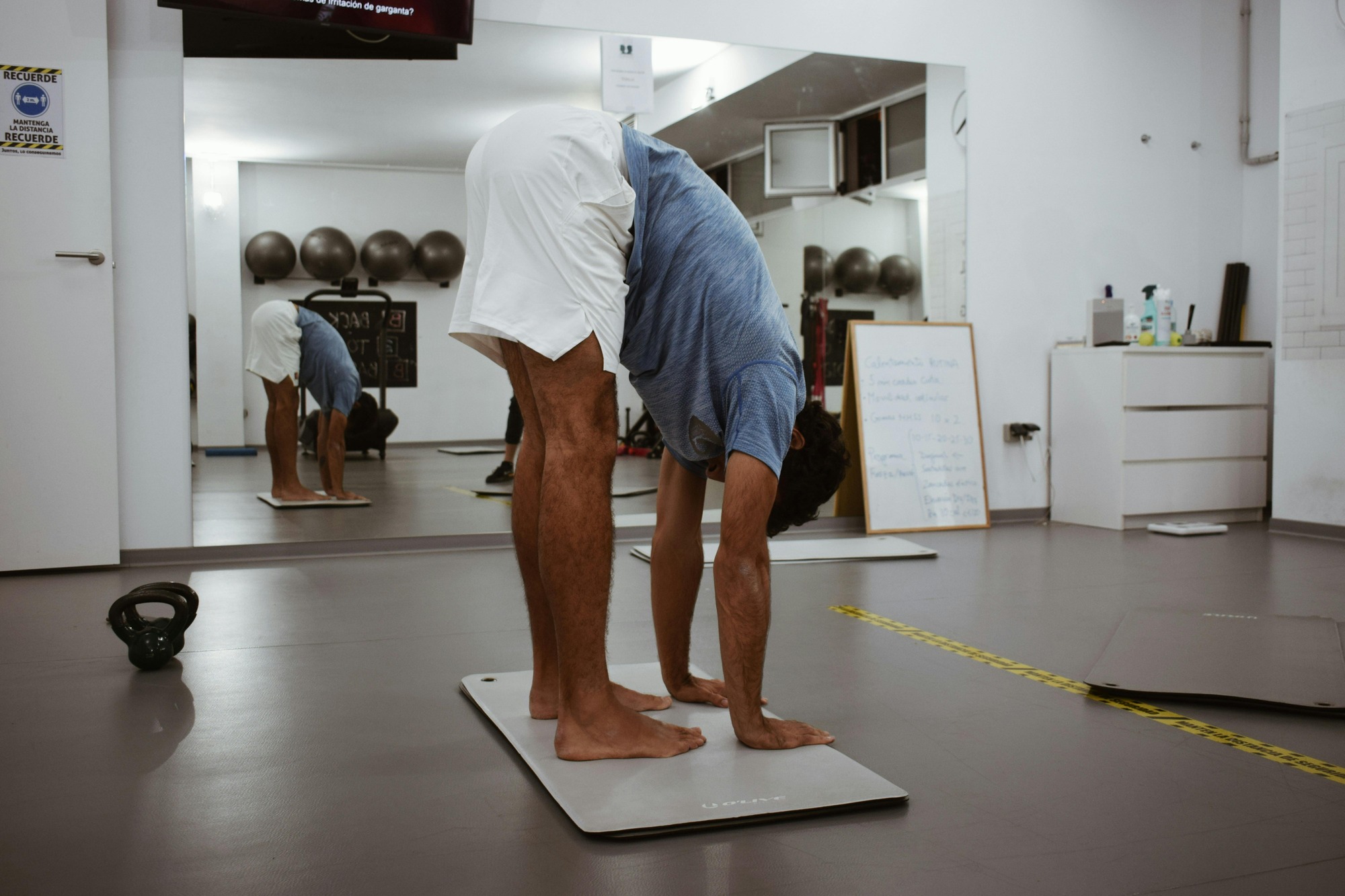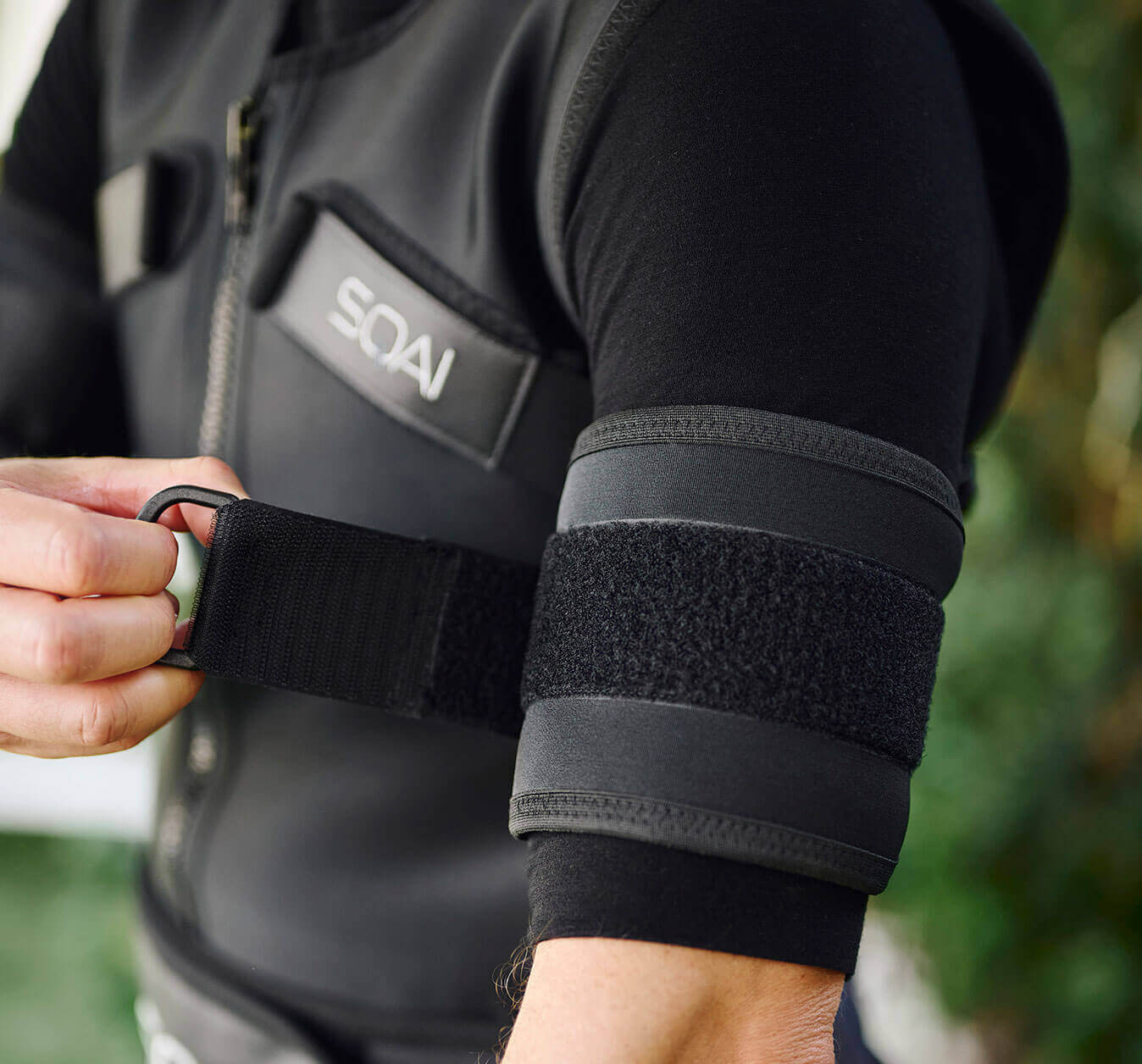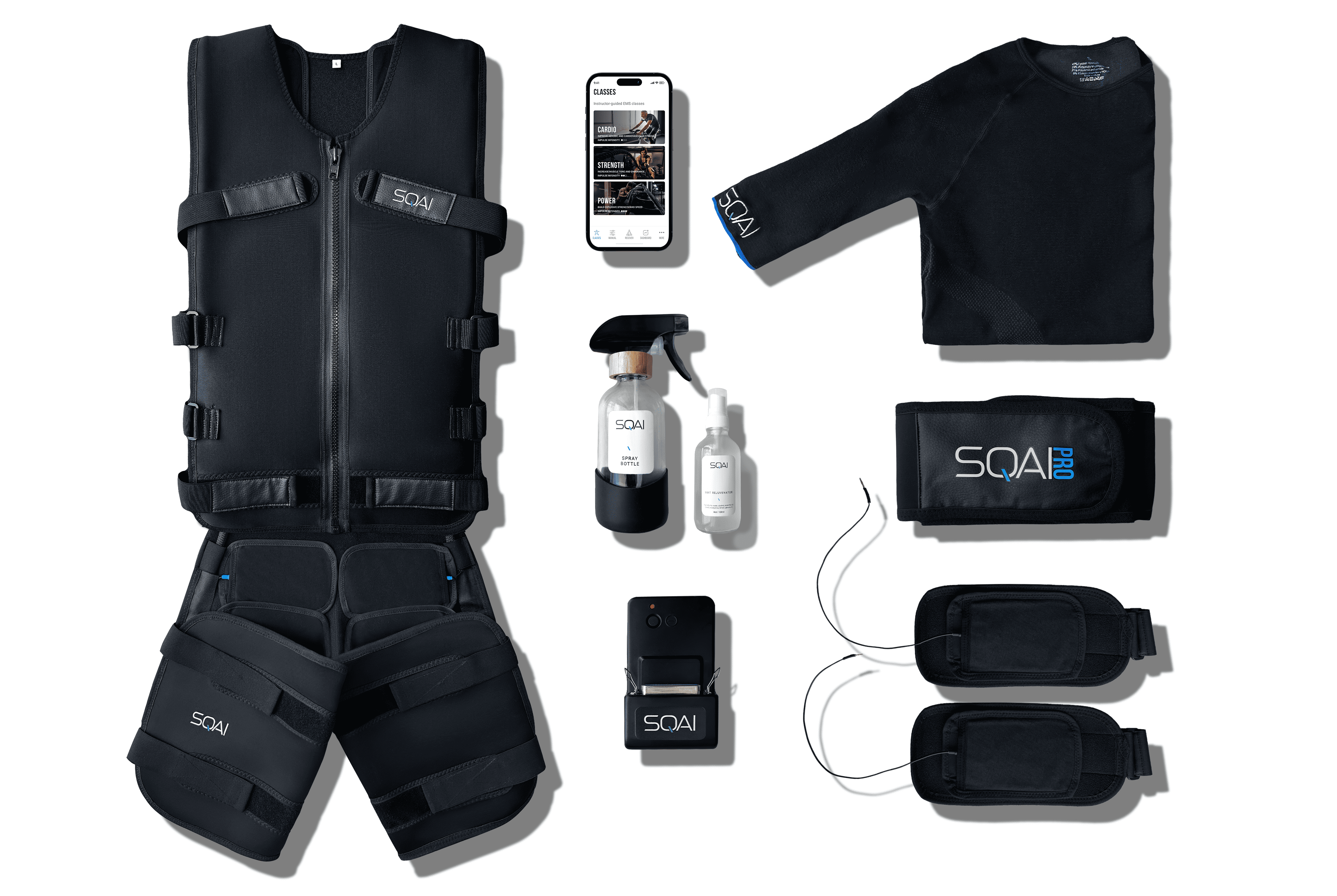As we navigate the complexities of modern life, prioritizing health and fitness has never been more crucial. With the rise of technology in the fitness world, Electro Muscle Stimulation (EMS) training is emerging as a revolutionary approach to achieving optimal health and longevity. We explore how EMS training can be a game-changer for enhancing physical well-being, preventing age-related decline, and ultimately future-proofing your body.
Getting to Know EMS Training
EMS training involves the use of electrical impulses to stimulate muscle contractions. By mimicking the natural signals sent from the brain to muscles, EMS engages muscle fibers more effectively than traditional exercise methods. This innovative training modality is gaining traction for its ability to deliver impressive results in a shorter time frame, making it particularly appealing for those with busy lifestyles. Moreover, the convenience of EMS training means you can achieve significant fitness gains in just 20-30 minutes, making it an ideal choice for individuals looking to optimize their time while still reaping the benefits of exercise.
The Longevity Benefits of EMS Training
Increased Muscle Strength and Mass
One of the primary benefits of EMS training is its capacity to enhance muscle strength and mass. As we age, maintaining muscle mass becomes increasingly challenging due to the natural decline in muscle fibers. EMS training effectively targets deeper muscle layers, promoting hypertrophy and strength development. This increase in muscle mass not only contributes to better physical performance but also plays a vital role in supporting metabolic health, which is crucial for longevity. Research indicates that individuals with higher muscle mass tend to have better insulin sensitivity and lower risks of chronic diseases, underscoring the importance of strength training for overall health.

Enhanced Metabolism
An efficient metabolism is essential for maintaining a healthy weight and preventing chronic diseases. EMS training can help boost metabolic rates by increasing muscle mass, which in turn elevates the number of calories burned at rest. A higher metabolic rate can aid in weight management and reduce the risk of obesity-related conditions, such as diabetes and cardiovascular diseases. By incorporating EMS into your fitness routine, you can support a metabolism that thrives well into later years. Additionally, the time-efficient nature of EMS allows for more frequent sessions, further enhancing its metabolic benefits and helping individuals maintain an active lifestyle.
Improved Bone Density
As we age, the risk of osteoporosis and fractures increases due to a decline in bone density. EMS training can help counteract this decline by stimulating muscle contractions that promote bone strength. The mechanical stress applied to bones during EMS sessions encourages bone remodeling, which is essential for maintaining healthy bone density. By prioritizing EMS training, individuals can take proactive steps toward safeguarding their skeletal health as they age. Moreover, combining EMS with weight-bearing exercises can enhance bone density even further, creating a comprehensive strategy for long-term skeletal health.
Enhanced Flexibility and Joint Health
Maintaining flexibility and joint health is crucial for overall mobility and quality of life. EMS training can support flexibility by targeting muscles and connective tissues, promoting relaxation and lengthening of muscles. This is particularly beneficial for individuals with stiffness or limited range of motion. Moreover, EMS training can aid in injury prevention by strengthening muscles that support joints, reducing the risk of strains and sprains. Enhanced flexibility also contributes to improved performance in sports and recreational activities, allowing individuals to enjoy a more active lifestyle.

EMS Training and Active Recovery
Accelerated Recovery Times
Recovery is a vital aspect of any fitness regimen, especially for individuals seeking to maintain an active lifestyle as they age. EMS training can enhance recovery times by promoting blood circulation and delivering nutrients to muscles more efficiently. This improved circulation helps flush out metabolic waste products, reducing soreness and speeding up the healing process after workouts or injuries. Furthermore, incorporating EMS sessions as part of a post-workout routine can enhance overall recovery, allowing individuals to return to their regular activities faster and with less discomfort.
Pain Management
Chronic pain can be a significant barrier to maintaining an active lifestyle. EMS training has been shown to alleviate muscle tension and reduce pain perception by promoting relaxation and improving circulation. By incorporating EMS into a pain management routine, individuals can experience enhanced comfort and greater mobility, enabling them to stay active and engaged in life. Additionally, EMS can be a valuable tool for individuals recovering from surgery or injuries, providing a gentle and effective way to rebuild strength without placing undue stress on the body.
The Mental Edge of EMS Training
Boosting Mental Health
Physical fitness is closely linked to mental well-being. EMS training can contribute to improved mood and mental clarity through the release of endorphins during muscle contractions. Additionally, the efficiency of EMS sessions allows individuals to spend less time exercising while still achieving significant results, providing a sense of accomplishment and motivation. This positive reinforcement can lead to a more consistent fitness routine and better overall mental health. Moreover, the structured nature of EMS training sessions can help establish a sense of routine, which is beneficial for mental stability and focus.
Enhancing Cognitive Function
Emerging research suggests that regular physical activity, including EMS training, can support cognitive function and reduce the risk of age-related cognitive decline. By stimulating muscle contractions, EMS may improve blood flow to the brain, enhancing cognitive performance and memory. Prioritizing EMS training can thus contribute to long-term brain health, making it an essential component of a holistic approach to longevity. Furthermore, engaging in EMS training can also improve concentration and mental resilience, essential skills for navigating the challenges of daily life.

Making EMS Training Part of Your Longevity Strategy
Combining EMS with a Balanced Lifestyle
While EMS training offers numerous benefits, it is essential to combine it with other healthy lifestyle practices. Prioritize a balanced diet rich in whole foods, engage in regular cardiovascular exercise, and ensure adequate sleep and recovery. By integrating EMS training into a comprehensive health strategy, you can create a sustainable approach to longevity that addresses both physical and mental well-being. This holistic approach not only enhances the effectiveness of EMS training but also encourages lifelong habits that support overall health.
Embracing Technology and Innovation
As fitness technology continues to advance, incorporating new tools and methods can further enhance your training experience. From wearable fitness trackers to nutrition apps, leveraging technology can provide valuable insights into your progress and health. EMS devices themselves have evolved, offering features that allow for greater customization and tracking of performance metrics. Embracing these innovations can enhance your EMS training experience and contribute to your overall fitness journey.
EMS Training for Injury Prevention
Strengthening Vulnerable Areas
Injury prevention is a crucial aspect of maintaining an active lifestyle, especially as we age. EMS training can effectively target vulnerable muscle groups and areas prone to injury, such as the knees, hips, and lower back. By strengthening these muscles, individuals can enhance joint stability and support proper biomechanics during daily activities and sports. This targeted approach to strengthening can significantly reduce the risk of injuries, allowing individuals to stay active and engaged in their favorite pursuits.
Enhancing Flexibility and Mobility
In addition to building strength, EMS training can improve flexibility and mobility by promoting muscle relaxation and increasing the range of motion in joints. Improved flexibility not only contributes to better athletic performance but also reduces the likelihood of strains and sprains. By incorporating EMS training into a regular fitness routine, individuals can enhance their overall mobility, making it easier to perform daily tasks and engage in physical activities without discomfort.

The Role of EMS in Rehabilitation
Safe Rehabilitation Post-Injury
For individuals recovering from injuries, EMS training can be a valuable rehabilitation tool. The low-impact nature of EMS allows individuals to rebuild strength and functionality without placing excessive stress on injured areas. This safe approach to rehabilitation can facilitate a quicker return to normal activities and sports. Working with a qualified professional to design a tailored EMS rehabilitation program can optimize recovery and ensure that individuals regain their strength and confidence.
Supporting Chronic Pain Management
EMS training can also play a vital role in managing chronic pain conditions. For individuals dealing with ongoing pain, EMS can provide targeted muscle stimulation that helps alleviate discomfort. By promoting muscle relaxation and improving blood flow to affected areas, EMS training can enhance pain relief and improve overall quality of life. This non-invasive approach to pain management allows individuals to remain active and engaged, reducing the limitations that chronic pain can impose.
EMS Training and Mental Well-being
Building Confidence Through Results
Achieving noticeable results through EMS training can have a significant impact on an individual's self-esteem and confidence. As individuals experience improvements in strength, muscle tone, and overall fitness, they are likely to feel more empowered and motivated to continue their wellness journey. This boost in confidence can lead to a more active lifestyle, as individuals are encouraged to participate in social activities and pursue new fitness challenges.
Reducing Stress and Anxiety
Regular physical activity is known to be a powerful stress reliever, and EMS training is no exception. The endorphin release that occurs during EMS sessions can help alleviate feelings of stress and anxiety, promoting a sense of well-being. Moreover, the time-efficient nature of EMS training allows individuals to fit exercise into their busy schedules, reducing the mental burden of finding time for workouts. By prioritizing EMS training, individuals can experience the dual benefits of physical fitness and improved mental health.
Future Trends in EMS Training
Advancements in Technology
The future of EMS training is poised for exciting advancements as technology continues to evolve. New developments in EMS devices, such as wireless systems and advanced sensors, are enhancing user experience and effectiveness. These innovations may allow for more personalized training programs, real-time feedback, and improved tracking of progress, making EMS training even more accessible and beneficial for users. Keeping an eye on these advancements can help individuals stay ahead in their fitness journey.

Integration with Other Fitness Modalities
As the fitness landscape continues to diversify, we can expect to see increased integration of EMS training with other fitness modalities. Combining EMS with traditional strength training, yoga, or Pilates can create a comprehensive fitness program that addresses multiple aspects of health and wellness. This integrated approach allows individuals to enjoy the benefits of various training methods while maximizing their results. Exploring these combinations can enhance the overall effectiveness of a fitness routine and keep individuals engaged and motivated.
The Community and Support of EMS Training
Building a Supportive Network
As EMS training gains popularity, a community of enthusiasts and professionals is emerging. Engaging with others who share similar fitness goals can provide motivation, support, and valuable insights. Participating in EMS training classes or joining online forums can help individuals connect with like-minded individuals and share their experiences. This sense of community fosters accountability and encouragement, which can be instrumental in achieving fitness goals.
Sharing Success Stories
The growing popularity of EMS training has led to an increase in success stories from individuals who have transformed their health and fitness through this innovative approach. Sharing these stories can inspire others to explore the benefits of EMS training and take charge of their own wellness journeys. Highlighting the positive experiences of EMS users not only builds community but also reinforces the effectiveness of this training method for enhancing longevity and overall well-being.

Future-Proofing Your Body with EMS
As we look toward the future of fitness, EMS training stands out as a powerful tool for promoting longevity and overall well-being. By enhancing muscle strength, improving metabolism, and supporting mental health, EMS offers a holistic approach to maintaining a healthy, active lifestyle. Embrace this innovative technology and take proactive steps toward future-proofing your body for years to come. By prioritizing EMS training as part of your wellness routine, you can enjoy a longer, healthier life filled with vitality and resilience. Whether you're a seasoned athlete or just starting your fitness journey, EMS training can help you unlock your full potential and prepare your body for a vibrant future.

